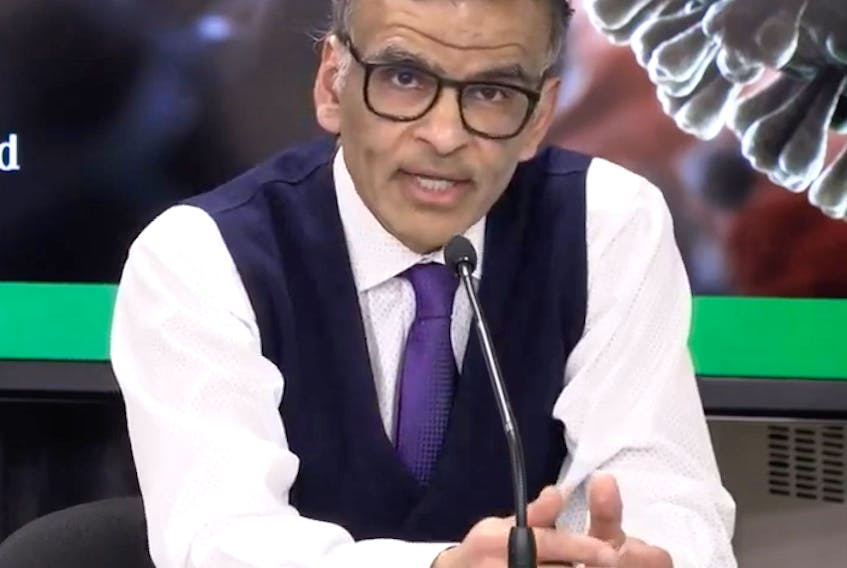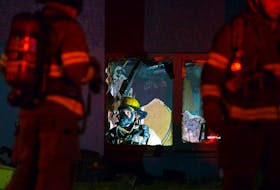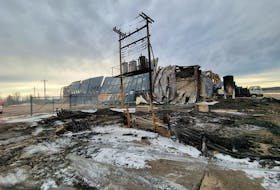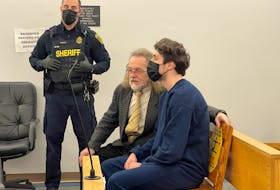ST. JOHN'S, N.L. — A proposed app to help trace COVID-19 contacts in Newfoundland and Labrador raised a number of questions about personal privacy Monday when the idea came up during a daily video briefing.
The software would use location services on a person's phone to find out where they are and who they’ve been near over a period of time.
As Orwellian as it sounds, clinician and professor Dr. Proton Rahman emphasized the tracking would have to be voluntary and balance privacy concerns.
“The checks and balances have to be in place, and that’s why the Department of Justice and the privacy commissioner would have to weigh in on issues like this,” he said.
Health Minister Dr. John Haggie added that experiences in South Korea and Singapore show that this kind of tracing would require at least a 60 per cent participation rate. When asked, Haggie was reluctant to name the local company that is pitching the app.
No cases
Chief Medical Officer of Health Dr. Janice Fitzgerald reported no new COVID-19 cases at the briefing. That means the total for the province remains at 268.
With 221 people having recovered from the disease, and only 16 new cases in the past 14 days, it would seem a couple of dozen people have been suffering with it for more than two weeks. Fitzgerald explained that two negative tests are often required to confirm recovery, and those tests may come long after symptoms have disappeared.
Meanwhile, the digital contact tracing proposal was one of a couple presented by Rahman as a means of quickly and efficiently monitoring COVID-19 in the province should restrictions on movement and activity be relaxed in response to a growth curve that has completely flattened over the past two weeks.

The other proposal was using artificial intelligence to predict exposure based on known demographics, facilities and behaviours. That sort of programming would take at least a month to set up.
“The most important thing to remember about our readiness is it’s not actually about the numbers, because the virus is going to persist,” Rahman said. “It’s going to be here for a while whether it’s imported through travel or it comes with some patients who are asymptomatic and subsequently become symptomatic. The question to ask is how ready are we when there are more cases.”
Apart from contact tracing, other tools that must be in place include rapid testing, sufficient personal protective gear, hospital capacity and human resources.

No specifics
Although there was a lot of talk about gradually lifting emergency public health orders, no one at Monday’s briefing would offer a specific example.
“We must proceed slowly, with great caution and care. We will get there, but it will take a co-ordinated approach with the safety of all of us in mind,” Fitzgerald said.
However, Rahman did cite two factors that would have to be tightly controlled. The main one, by far, is the potential for clusters stemming from social gatherings.
“This is the rationale why large gatherings would be very difficult to do in the very near future,” he said.
The other factor is travel.
“So we have to have a rational, respectful, but a very effective border control plan to stop significant importation of the virus into our province,” he said.
“The hardest part is when we actually start to reduce the public health measures, when we start interacting, because we can lose control right away.”
In other developments Monday:
• Premier Dwight Ball said cost-shared funding to top up wages of essential workers, including personal care attendants, is still being worked out.
• Haggie offered a shout-out to the lab technologists for their work in the province and especially for their service during the pandemic.
• Fitzgerald added a new border requirement that all arriving passengers must now provide a self-isolation plan, as well as sign a declaration form.
Peter Jackson is a Local Journalism Initiative reporter covering health for The Telegram.









